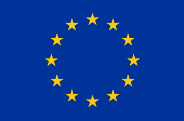
Safe non-food consumer Products in the EU and China
The primary objective of standardisation is the definition of voluntary technical or quality specifications with which current or future products, production processes or services may comply. Standardisation can cover various issues, such as different grades or sizes of a particular product or technical specifications in product or services markets.
The European Standardisation system is founded on the principles of coherence, transparency, openness, consensus, voluntary application, independence from special interests and efficiency. In accordance with the founding principles, it is important that all relevant interested parties, including public authorities and small and medium-sized enterprises (SMEs), are appropriately involved in the national and European standardisation process.
The standardisation process starts when there is a need for a new or revised standard. It can be triggered by the private sector (standardisation bodies, manufacturers, etc.) and/or by the European Commission who listens to the needs expressed by the Member States and by the stakeholders.
Any proposal for a new standard goes through the European standardisation organisations (ESOs), namely the European Committee for Standardisation (CEN), the European Committee for Electrotechnical Standardisation (Cenelec) and the European Telecommunications Standards Institute (ETSI) recognised by the EU Standardisation Regulation 1025/2012.
The European Commission drafts a so-called ‘standardisation request’ describing the essential requirements from the legislation that should be addressed by the standard. If Member States agree, it is sent to the ESOs asking them to accept the request and to develop a work plan.
The standardisation organisations will identify an existing Technical Committee to draft the standard or create a new working group.
Once all comments have been evaluated and appropriately dealt with, a final draft standard will be produced. During the different stages of its development, the standard is checked by independent experts, who together with the European Commission verify that the standard fulfils the original standardisation request and the requirements of the European legislation.
If agreed, then the standard can be adopted and published by the competent ESO and can be offered to the European Commission to be published in the Official Journal of the European Union (OJEU). After the publication of a European Standard, each national standards body or committee is obliged to withdraw any national standard which conflicts with the new European Standard. Once a European standard is listed in the OJEU, it gives to the product complying with it the legal effect of presumption of conformity with the requirements of the legislation under which it was requested and developed, as far as the risks and the risk categories covered by the standard. This helps manufacturers on how to place safe and conform products on the EU market.
Non-EU businesses can get involved in the standards making process. The business should simply contact the national standardisation body in the EU Member States where it is legally represented and ask to become a member of the relevant technical committee.
How to find relevant standards
Learn more about harmonised standards for different product categories
Learn more about ETSI

This website was created and maintained with the financial support of the European Union. Its contents are the sole responsibility of SPEAC project and do not necessarily reflect the views of the European Union.